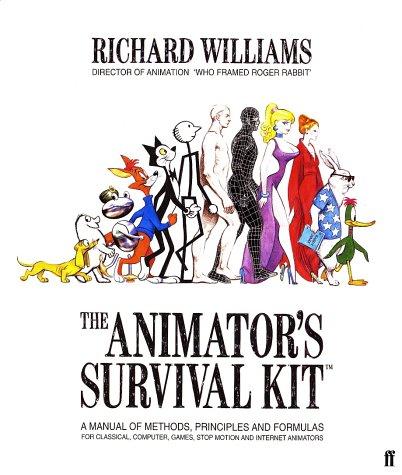
Sylvain Hellegouarch《CherryPy Essentials》
书刊介绍
内容简介
This book covers the CherryPy library for Python web development from its history and installation through its main features and core concepts to its integration with Python and other products to construct, test, and deploy a sample photoblog application. The author Sylvain Hellegouarch is dedicated to the development of free software projects and has been coordinating and administrating the community efforts around the CherryPy project since 2004. The approach based on an example application introduces many other common Python libraries, providing transferable skills also relevant for non-web Python projects. CherryPy is a Python library for web development that allows developers to build web applications in the same way as any other object-oriented Python program. Enriched by several years of active development, it has become one of the most established toolkits for building solid and high-performance web applications in Python. CherryPy abstracts the complex low-level HTTP protocol into an easy-to-use interface that respects Python idioms. The library aims at being simple to learn for a beginner while offering the most advanced features to fluent Python developers. For these reasons CherryPy was chosen to be at the heart of the popular and feature-rich TurboGears web framework. CherryPy-powered web applications are stand-alone Python applications with their own embedded multi-threaded web server, but can also run behind Apache or IIS for scalability. . CherryPy installation using tarball, egg, and subversion . The CherryPy library in depth: its design and how to use it . Using CherryPy with common Python and non-Python products . Object Relational Mapping with SQLObject, SQLAlchemy, and Dejavu . Web Services via REST and the Atom Publishing Protocol . AJAX and client-side scripting via MochiKit . Unit, functional, and load testing . CherryPy, Apache, and lighttpd deployment solurions The book starts with two chapters dedicated to CherryPy itself, its history and installation. Then it moves through a gentle introduction to the main features and concepts of CherryPy to a thorough review of its core capabilities. After laying this foundation the book dives into a real-world example, detailing important steps in the creation of a photoblog application. These chapters cover database manipulation via Object Relational Mapping (ORM), using web services to enhance the application, and client-side scripting through AJAX. Finally, the book covers the need for unit, functional, and performance testing before closing with deployment solutions for a CherryPy-based application. Who this book is written for This book is principally geared towards Python web developers, who are looking to add the power of the CherryPy library to their existing Python skillset. It assumes a good working knowledge of Python . Although the CherryPy toolkit is at the core of the book, many other common libraries are introduced. TABLE OF CONTENTS SUMMARY 1.Introduction to CherryPy 2.Download and Install CherryPy 3.Overview of CherryPy 4.CherryPy in depth 5.A photoblog application 6.Web Services 7.The presentation layer 8.Ajax 9.Testing 10.Deployment
作品目录
Preface 1
Chapter 1: Introduction to CherryPy 7
Overview 7
History of CherryPy 8
The Community 9
CherryPy Project Strengths 10
Beyond CherryPy 11
Through the Book 11
Summary 12
Chapter 2: Download and Install CherryPy 13
Requirements 13
Overview 14
Installation from a Tarball 16
Installation through Easy Install 18
Installation from Subversion 20
Testing your Installation 23
Keeping CherryPy Up to Date 23
Summary 24
Chapter 3: Overview of CherryPy 25
Vocabulary 25
Basic Example 26
Built-In HTTP Server 32
Internal Engine 32
Configuration 33
Object Publisher Engine 36
Library 38
The Autoreload Feature 39
The Caching Module 39
Table of Contents
[ ii ]
The Coverage Module 39
The Encoding/Decoding Module 40
The HTTP Module 40
The Httpauth Module 40
The Profiler Module 40
The Sessions Module 41
The Static Module 42
The Tidy Module 42
The Wsgiapp Module 42
The XML-RPC Module 42
Tools 43
Error and Exception Handling 44
Summary 49
Chapter 4: CherryPy in Depth 51
HTTP Compliance 51
Multiple HTTP Servers 52
Multi-Threaded Application Server 54
URI Dispatching 55
HTTP Method Dispatcher 55
Routes Dispatcher 57
Virtual Host Dispatcher 58
Hook into CherryPy's Core Engine 59
CherryPy Toolbox 61
Basic Authentication Tool 62
Caching Tool 63
Decoding Tool 64
Digest Authentication Tool 65
Encode Tool 66
Error Redirect Tool 67
Etag Tool 67
Gzip Tool 69
Ignore Headers Tool 69
Log Headers Tool 70
Log Tracebacks Tool 71
Proxy Tool 72
Referer Tool 73
Response Headers Tool 74
Trailing Slash Tool 75
XML-RPC Tool 76
Toolbox 77
Creating a Tool 77
Table of Contents
[ iii ]
Static Resource Serving 81
Using the Staticfile Tool to Serve a Single File 81
Using the Staticdir Tool to Serve a Complete Directory 83
Bypassing Static Tools to Serve Static Content 85
WSGI Support 86
Hosting a WSGI Application within the CherryPy WSGI Server 87
Hosting a CherryPy WSGI Application within a
Third-Party WSGI Server 89
Summary 90
Chapter 5: A Photoblog Application 91
A Photoblog Application 91
Photoblog Entities 92
Vocabulary 94
DBMSes Overview 95
Relational Database Management System (RDBMS) 95
Object-Oriented Database Management System (OODBMS) 96
XML Database Management System (XMLDBMS) 97
Object-Relational Mapping 97
Python Object-Relational Mappers 98
Photoblog Application Entity Modeling 108
Mapping Entities 109
Units and UnitProperties 111
Associating Units 112
The Sandbox Interface 112
Querying Units 113
Extending the Data Access Layer 114
Summary 117
Chapter 6: Web Services 119
Traditional Web Development 119
Separation of Concerns 121
REST 122
Uniform Resource Identifier 123
HTTP Methods 124
Putting it Together 128
REST Interface through CherryPy 130
Atom Publishing Protocol 131
Atom XML-Document Format 132
APP Implementation 134
Summary 136
Table of Contents
[ iv ]
Chapter 7: The Presentation Layer 137
HTML 137
XML 138
XHTML 138
CSS 139
DHTML 141
Templating 142
Kid—The Templating Engine 142
Overview 142
Kid's Attributes 144
XML-Based Templating Language 144
Variable Substitution 144
Conditional Statement 144
Looping Mechanism 145
Extensibility 146
Other Attributes 147
Photoblog Design Preparation 147
Targetting the User Agent 147
Tools 148
Global Design Goals 148
Design Directory Layout 149
CherryPy—Encapsulating the Template Rendering Process 149
Photoblog Design in Detail 151
Basic Structure 151
Mochikit 156
Developing the Photoblog Design 157
HTML Code 157
Adding a Link 158
Handling the End-User Actions 158
Amending the Template 159
Amending the CSS 159
Let's be More Flexible... 160
Summary 161
Chapter 8: Ajax 163
Rise of the Rich-Client Applications 163
Ajax 164
Ajax—Advantages and Drawbacks 165
Behind the Scene: XMLHttpRequest 166
Performing a GET Request 167
Performing a Content-Negotiated GET Request 168
Performing a POST Request 169
Performing PUT, HEAD, or DELETE Requests 170
Table of Contents
Cookies 170
Authentication using Digest or Basic Schemes 170
JSON 176
Applying Ajax to our Application 178
Defining the Required Namespaces 178
Implementing Namespaces 179
Adding Methods to the Classes 179
Method to Create a New Album 183
Method to Update an Existing Album 190
Method to Delete an Existing Album 190
Summary 191
Chapter 9: Testing 193
Why Testing 193
Planning a Test 194
Common Testing Approach 195
Unit Testing 195
unittest 196
doctest 201
Unit Testing Web Applications 205
Performance and Load Testing 213
Functional Testing 218
Application under Test 219
Selenium Core 222
Selenium IDE 227
Selenium Remote Control 231
Summary 233
Chapter 10: Deployment 235
Configuration 235
CherryPy—Web and Engine Configuration System 235
Photoblog Application Configuration System 238
Deployment 240
Apache with mod_rewrite Module 241
Lighttpd with mod_proxy Module 243
Apache with mod_python Module 244
mod_python with WSGI Application 246
SSL 246
Creating a Certificate and a Private Key 247
Using the CherryPy SSL Support 248
Using the lighttpd SSL Support 250
Using the Apache mod_ssl Support 251
Summary 251
Index 253
相关推荐
-
![[美] 罗杰·D·维曼《大众媒介研究导论》](http://oss.shudanhao.com/caiji/chazidian/2023/289.jpg)
[美] 罗杰·D·维曼《大众媒介研究导论》
《大众媒介研究导论》(第7版)是一本经典的媒介研究方法教材。两位作者都是资深的媒介研究者,维曼博士是一家市场研究公司的总裁和
-
![[美] 特尼博姆《分布式系统原理与范型》](http://oss.shudanhao.com/caiji/chazidian/2023/2246.jpg)
[美] 特尼博姆《分布式系统原理与范型》
本书是著名作者Tanenbaum关于分布式系统的最新力作,是分布式系统的权威教材。本书分成了两大部分。第2~9章讨论的是分布式系统的
-

Rodrigo Branas《AngularJS Essentials》
Thisbookisapracticalguidefilledwithreal-worldexamplesthatwillhelpyoudiscovertheb...
-

Head First Go语言程序设计
《Head First Go语言程序设计》内容简介:Go是为高性能网络和多处理而设计的,但与python和javascript一样,该语言易于阅读和使用。
-

童年的秘密
《童年的秘密》内容简介:本书详尽地告诉父母,儿童的成长有着其内在的精神驱动和规律,儿童的成长需要依靠他们自身不断的有意识的
-
![[英] 彼得《Shell脚本专家指南》](http://oss.shudanhao.com/caiji/chazidian/2023/3455.jpg)
[英] 彼得《Shell脚本专家指南》
《Shell脚本专家指南》旨在为Linux、Unix以及OSx系统管理员提供短小精悍且功能强大的shell实现解决方案,教会读者如何使用现有调
-
![[美] P·J·Plauger《C标准库》](http://oss.shudanhao.com/caiji/chazidian/2023/4083.jpg)
[美] P·J·Plauger《C标准库》
本书是由世界级C语言专家编写的C标准库经典著作。英文版已经重印十多次,影响了几代程序员。本书结合C标准的相关部分,精辟地讲述
-

Debra Levin Gelman《数字时代儿童产品设计》
Emotion.Ego.Impatience.Stubbornness.Characteristicslikethesemakecreatingsitesand...
-

结构思考力Ⅱ
《结构思考力Ⅱ》内容简介:本书是有关结构思维的,由李忠秋老师亲自执笔,结构思考力系列丛书之一。它告诉我们只要在清晰思考的基
-

《An Introduction to Functional Programming Through Lambda Calculus》书籍《An Introduction to Functional Programming Through Lambda Calculus》
Thiswell-respectedtextoffersanaccessibleintroductiontofunctionalprogrammingconce...
-
![[美] Donald E·Knuth《计算机程序设计艺术:第4卷 第3册(双语版)》](http://oss.shudanhao.com/caiji/chazidian/2023/2042.jpg)
[美] Donald E·Knuth《计算机程序设计艺术:第4卷 第3册(双语版)》
关于算法分析的这多卷论著已经长期被公认为经典计算机科学的定义性描述。这一册以及刚刚出版的第4卷第2册揭开了人们急切等待的《
-

大数据技术入门(第2版)
《大数据技术入门(第2版)》内容简介:目前国内大数据市场继续保持高速的发展态势,作者在与地方政府、证券金融公司的项目合作中发
-
![[日] 大野功二《游戏设计的236个技巧》](http://oss.shudanhao.com/caiji/chazidian/2023/37622.jpg)
[日] 大野功二《游戏设计的236个技巧》
本书从游戏设计者和玩家的双重角度出发,以大量游戏为例,并结合丰富的配图,从“玩家角色”“敌人角色”“关卡设计”“碰撞检测
-

Yack《ASP.NET 2.0编程珠玑》
本书由微软MVP编写,是ASP.NET领域一本重要的技巧类图书,提供了很多鲜为人知的优秀解决方案、未正式发布的特性、提示和技巧,可
-

罗升阳《Android系统源代码情景分析(修订版)(含CD光盘1张)》
在内容上,《Android系统源代码情景分析(修订版)(含CD光盘1张)》结合使用情景,全面、深入、细致地分析了Android系统的源代码
-

Anthony Williams《C++ Concurrency in Action》
HIGHLIGHTC++ConcurrencyinActionisthefirstbooktomarkettoshowhowtotakeadvantageoft...
-

癌症患者怎么吃
《癌症患者怎么吃》内容简介:作者拥有十年中美临床营养工作经验,深知癌症患者在康复过程中离不开健康的饮食,科学的营养支持,从
-

南腔北调集
《南腔北调集》内容简介:本书是收鲁迅1932年至1933年所作杂文五十一篇,1934年3月上海同文书店初版。包括《为了忘却的记念》《论“
-

《Learning ActionScript 3.0》书籍《Learning ActionScript 3.0》
Inthisbook,authorsRichShupeandZevanRossersharetheknowledgetheyvegainedfromtheiry...
-

社会主义核心价值观·关键词:诚信
《社会主义核心价值观·关键词:诚信》内容简介:在一般意义上,“诚”即诚实诚恳,主要指主体真诚的内在道德品质;“信”即信用信





